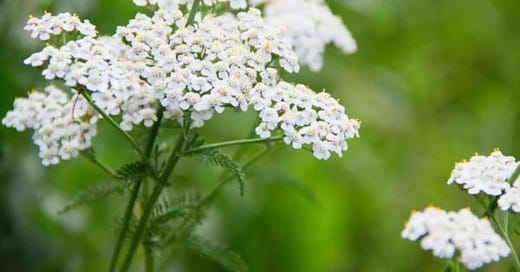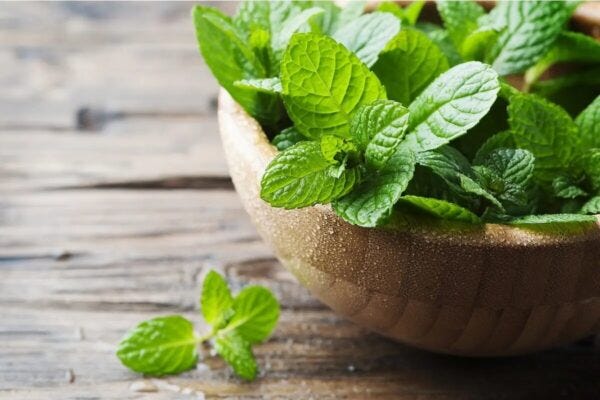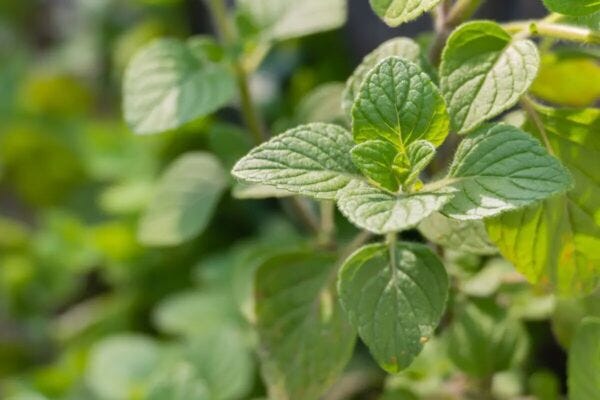Source : https://www.epochtimes.fr/les-5-meilleures-herbes-immunitaires-et-antivirales-a-cultiver-chez-soi-2527945.htm
BY CAMILLE SU for The Epoch Times- January 28, 2024
When we have a cold or feel unwell, we tend to consult a doctor or buy medicine at the pharmacy. However, some diseases can be treated with the healing power of plants, especially herbs, as part of natural remedies, without fear of drug resistance. Additionally, some plants lend themselves well to growing at home .
5 Healthy, Easy-to-Grow Herbs :
1. Yarrow
Yarrow has antipyretic properties (reduces fever). (Alina Toppinen/Shutterstock)
Medicinal parts: leaves and flowers
Uses: stops bleeding, induces sweating, reduces fever , lowers blood pressure and treats varicose veins.
The Latin name for yarrow is Achillea millefolium, and takes its name from Achilles, the mythical hero of the Trojan War, who used it to treat the wounds of wounded soldiers, yarrow having hemostatic and healing properties .
Since ancient times, people have applied fresh or dried yarrow to wounds to stop bleeding , promote healing, and treat ulcers. Modern research has also discovered that yarrow extracts have obvious anti-inflammatory properties for the skin.
Erica Kuo, a registered herbalist in the United States, certified aromatherapist in the United Kingdom and the United States and founder of Rosemary Garden, said that yarrow is a medicinal herb commonly used to stop bleeding when out in nature, “but it is also the most effective in reducing fever.” Unlike antipyretic medications that can cause chills, drinking yarrow tea during a fever can warm the body and cause sweating, which lowers the fever. As it warms the body, people who tend to have cold hands and feet in winter can also benefit from it.
In addition, yarrow has vasodilator effects, which are antihypertensive and can be used to treat varicose veins.
“Yarrow is also very effective in stabilizing blood pressure. », specifies Erica Kuo. » Very easy to grow at home, yarrow is a perennial plant found in nature, and which likes open, rich and dry land, meadows, but also the edges of roads and paths as well as 'at high altitude'.
Yarrow has provided numerous horticultural varieties, with differently colored flowers . If yarrow with white flowers is the most widespread, there are also varieties with yellow flowers (moonshine), or even orange or red. The color of yarrow flowers can also be influenced by soil pH.
2. Echinacea
All parts of the echinacea plant have medicinal uses. (Barbara Smits/Shutterstock)
Medicinal parts: roots, leaves and flowers; the whole plant is used for medicinal purposes.
Uses: Boosts immunity, fights viral and bacterial infections, and helps reduce fever.
Many people plant Echinacea in their garden for ornamental purposes, not realizing that every part of the plant has medicinal value.
Echinacea contains various phytochemicals, such as phenolic acids, polysaccharides, and alkamides . Among the latter, alkamides have immunomodulatory, anti-thrombotic, anti-microbial, antiviral, anti-inflammatory, antioxidant, analgesic, anti-diabetic and anti-cancer activities.
In terms of immunomodulation , echinacea can modulate both innate and adaptive immune responses. Regular consumption of echinacea may slightly reduce the chances of catching a cold . Drinking echinacea tea when the early stages of the flu appear can relieve these symptoms more quickly. A clinical trial showed that drinking hot echinacea tea during the early stages of the flu was just as effective as the antiviral drug oseltamivir and had a reduced risk of complications and side effects.
Another study showed that taking echinacea tablets during a cold can shorten the duration of illness in children, with 90% of colds completely resolved after 10 days.
“Many people don't know how useful echinacea is,” said Erica Kuo. » Leaves and roots have beneficial properties, but it is the roots that are most effective, especially echinacea roots planted for at least two years. »
Echinacea roots can be used to make tinctures, which have the added benefit of being easy to store and available throughout the year. Alcohol is the best extraction medium due to the low water solubility of alkamides.
When taking echinacea to reduce fever, it is best to add a little cooling peppermint to improve its effectiveness, especially when the throat is inflamed.
Erica Kuo said that in Taiwan, echinacea is usually planted in October and harvested in March or April of the following year, whereas in the United States, it is best planted in spring and harvested in summer.
In France , Echinacea grows in the garden almost all year round, apart from periods of frost and severe drought.
In cold and humid regions, it is ideally planted in spring, when all risk of frost has passed, during March to April.
In southern regions, it is usually planted in the fall, when the plant begins to go dormant and the soil is still warm and humid, from September to October.
3. Peppermint, spearmint
Peppermint may improve gastrointestinal conditions and aid digestion. (Oxana Denezhkina/Shutterstock)
Medicinal parts: leaves
Uses: Relieves stomach pain, bloating, nausea and vomiting.
Peppermint is commonly used to improve gastrointestinal disorders. For example, if one suffers from bloating after eating foods that produce intestinal gas, drinking peppermint tea can usually cause burping and gas in less than half an hour.
One study showed that peppermint can be used to improve irritable bowel syndrome, functional dyspepsia, and functional abdominal pain in children. It also has antibacterial and anti-inflammatory properties, as well as the ability to increase attention.
Erica Kuo noted that there are more than 20 different varieties of peppermint on the market today, including pineapple peppermint, chocolate peppermint and licorice peppermint. These new varieties of mint, mainly used to enhance cocktails or fruit juices, may not have the same effectiveness as traditional peppermint and spearmint, the effectiveness of which has been the subject of research. greater number of searches.
4. Rosemary
Rosemary can promote fat metabolism and improve memory. (CreatoraLab/Shutterstock)
Medicinal parts: leaves and branches
Uses: promotes fat metabolism, stimulates blood circulation and strengthens brain function.
Rosemary is added to some meat dishes, which not only enhances the aroma and eliminates the bitter taste, but also promotes fat metabolism in the body.
Research has shown that rosemary can inhibit lipid absorption and regulate lipid and glucose metabolism, resulting in reduced blood cholesterol and glucose levels. This may help reduce the risk of obesity and metabolic syndrome.
People who often experience indigestion or stomach upset after eating meat can try adding rosemary when cooking beef, pork, chicken or other meats, or drinking a cup rosemary tea after meals.
Erica Kuo suggests that people suffering from gallstones or cholecystitis marinate meat dishes with rosemary to promote fat metabolism in the body. It is recommended to combine it with an infusion of dandelion leaves or roots, which can help improve the functioning of the gallbladder, as dandelion can also promote fat metabolism and support the functions of the gallbladder and the pancreas. People who have poor fat metabolism are more prone to pancreatic and gallbladder cancer, she says.
Rosemary contains different classes of polyphenols , which have antioxidant, anticancer and antidiabetic properties. Additionally, it can also help treat inflammation , relieve pain, boost memory, reduce anxiety, and tranquilize (calm) the mind .
Erica Kuo adds that rosemary contains eucalyptol, which is beneficial for cognitive functions. People suffering from cognitive impairment or memory decline may also benefit from consuming rosemary.
5. Oregano
Oregano, or origanum vulgare, has strong antibacterial properties. (David Jalda/Shutterstock)
Medicinal parts: leaves
Uses: strengthens immunity, has antibacterial and anti-inflammatory effects, and prevents parasitic infections.
Origanum vulgare, better known as oregano , is commonly used in Italian cuisine. It is a prolific herb that has the characteristics of a wild plant, flowering and producing seeds easily.
Carvacrol, a compound found in oregano, is a powerful antioxidant that can effectively fight pathogens , including bacteria and fungi like Escherichia coli, Staphylococcus aureus, and Aspergillus flavus . An experiment showed that Origanum vulgare essential oil can inhibit multidrug-resistant strains of bacteria, even at lower concentrations .
Erica Kuo noted that carvacrol has the strongest antibacterial properties among all essential oil components extracted from plants, and that oregano has the highest concentration of carvacrol.
Interestingly, the concentration of carvacrol in oregano increases after it is dried. Erica Kuo recommends adding dried oregano to dishes rather than infusing it because its flavor is too pungent and spicy. She even suggests adding a few dried oregano leaves to the food of pets, like cats or dogs, to prevent them from catching parasites.
Tip for successfully growing aromatic herbs: water
It is not enough to use one or two leaves of these herbs to fully benefit from their therapeutic benefits; a certain amount of water is necessary.
Effective ratio: for a 25 cl cup of infusion, use 3 tablespoons of fresh leaves or 1 tablespoon of dried leaves.
If using echinacea roots, the quantity can be reduced to 1 or 2 teaspoons.
Erica Kuo, who has been an advocate for self-care and healing using plants and essential oils for many years, says plants are less likely to cause drug resistance. She explains that the environment, temperature, humidity, soil, sunlight and other factors in which plants grow can affect the ratio of their chemical structures, such as that of carvacrol. Since the ratio is not always the same, bacteria and viruses are less likely to develop resistance.
However, the main thing is to use high quality, organic or locally grown plants. It is recommended to check whether the methods of extracting essential oils meet standards, as well as the growing conditions of the plants. Growing your own plants can naturally ensure safe use.
According to Erica Kuo, many people struggle to grow these plants due to water issues. For example, herbs such as rosemary and oregano thrive naturally in calcareous soil with excellent drainage. Therefore, when growing these plants, it is essential to ensure good drainage and take into account local rainfall conditions.
Overwatering can be a common cause of failure in growing herbs, as it can lead to plants rotting and dying. It is important not to overwater newly purchased herbs. Adding vermiculite or perlite to the soil helps adjust soil texture and improve drainage, water retention and air permeability.









